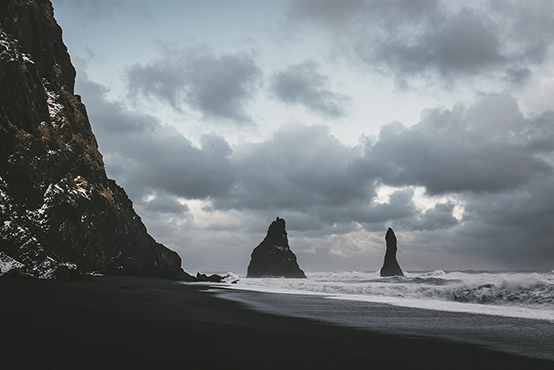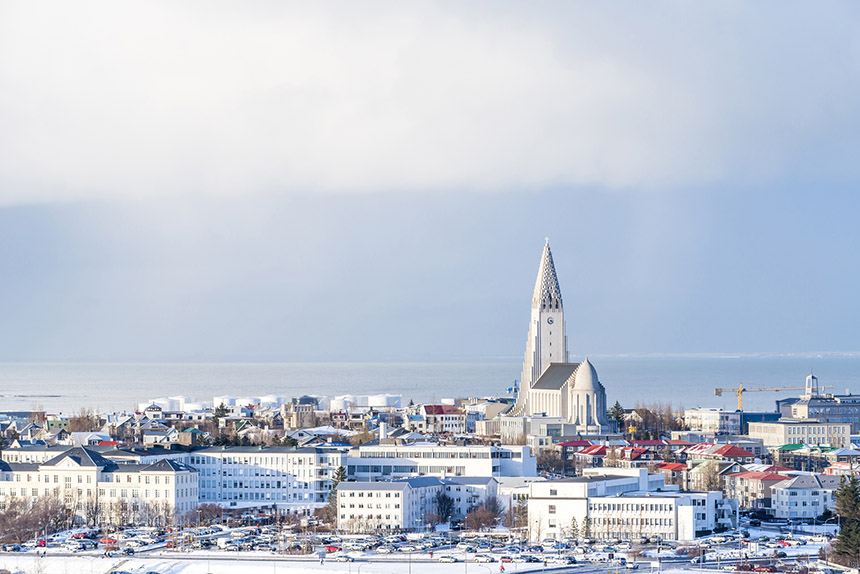Everybody knows the ‘The Land of Fire and Ice’ for its thundering waterfalls, Baltic black sand beaches and vibrant sky-dancing auras, but Iceland also boasts an array of weird and wonderful food just waiting for those with adventurous taste buds to tuck into. Jagged stone formations rising up swathed in a heavy mist, chunks of fragmented glaciers drifting eerily in a blue lagoon and bubbling hot springs breaking through cracks in the Earth’s crust are just a few examples of Iceland’s harsh, far-flung environment that, in combination with a depressing lack of sunlight in the winter months, have meant that Icelanders have had to come up with many creative culinary ideas over the years. Thanks to the island’s extreme natural setting, many essential items are imported from overseas meaning food often comes with a hefty price tag. But if you are on the hunt for more authentic Icelandic cuisine that comes naturally to the island, take a glance at our list of traditional food in Iceland.
Breakfast
If you want to kick off the day eating like a local, then Skyr, a thick and creamy cheese-yoghurt which is considered one of the most traditional foods in Iceland, is the way to go. With darkness filling Iceland for most of the year, sunshine-craving Icelanders needed to find a way to survive without vital vitamin D. Skyr was the solution, as it is jam-packed with nutrients to help with bone strength when the sun doesn’t reach the Nordic horizon. Tuck into a hearty bowl of this Icelandic breakfast with a splash of cream, a dollop of fresh berries or a sprinkle of brown sugar, or enjoy it au natural, like many locals do. If Skyr isn’t your thing, Icelandic rye bread is a must-try when on this volcanic island. The town of Laugavautn, nestled just east of Reykjavik, is home to one of the most extraordinary bread making processes in the world. Along a pebble-ridden lakeshore, traditional bread makers dig holes, each filling with naturally boiling water, before inserting the dough pot into them. These geothermal hotspots cook the rye bread to perfection, using Mother Nature’s pure force, and the result is perfectly paired with smoked salmon and a hearty spread of butter.
Mid-morning Snack
After venturing past thundering waterfalls, clambering over blustery black-sand beaches and over otherworldly lava fields along the Golden Circle, an ice cream is a well-deserved mid-morning treat. Whether you are wandering through the bustling centre of Reykjavik or trundling around the rugged countryside in a 4x4, there are ice cream shops dotted across the country, whatever the time of year. Gamli is a soft-serve ice cream which has been popular for hundreds of years and is still a go-to for tourists and locals who are trying to seek out the most traditional food in Iceland or just fancy a sweet treat.

Image © Un Cercle
Lunch
Reykjavik hot dogs are a staple when dashing around the countryside exploring the natural wonders that Iceland has to offer. Although fermented shark, which you may come across when dining in Iceland, is considered far and wide to be the country’s national dish, hot dogs, or pylsa, are so ubiquitous and beloved by Icelanders that they are a staple in most diets. With sheep outnumbering humans in this vast country, lamb sausages are plentiful and although we have suggested trying one for lunch, these meaty treats are devoured at any time of day. Whether spending your days trying deep sea fishing in Husavik, wandering the black sand beaches down in Vik or exploring the largest glacier in Iceland at Höfn, you will be able to find these traditional hot dogs in almost every restaurant, café or petrol station across the country.
Afternoon Snack
Iceland has a famed reputation for food that might make modern tastebuds quake, but there is no way you can leave this icy wilderness without getting a taste of its famous fermented shark. Fermented shark is possibly the most famous Icelandic dish and is very popular with the locals. It is without a doubt one of the wackiest foods we can think of to try and is a must when seeking the most traditional food in Iceland, especially if you want to try eating like a Viking. After being left underground for six to eighteen weeks (depending on the season), the shark meat is cut into pieces and hung up to dry on make-shift fish washing lines, before being cut into cubes ready to eat. Enjoy a slurp of traditional caraway-flavoured schnapps or Brennivin (known unappealingly as ‘black death’ by locals) to wash down the ammonia-rich fish.
Dinner
Seafood is a staple in Icelanders’ diets. Cod, salmon and haddock are the most common types of fish that are tucked into, but langoustines are also a firm favourite for most local gourmands. Whether nestled in a remote fishing town in the north of the island, along the glistening red shores in the east or in the capital of Reykjavik itself, fish for dinner is a must. Choose from all sorts of fish-based dishes, whether it be deep fried cod and chips, salted cod flatbreads, crusty baked fish or mashed fish stew, just as Icelanders have done for years and years in order to keep themselves warm and well fed during the painfully cold winters. If you want to brave the bitterness, head out with an expert fisherman for a day on the sea where you will hopefully bring in a hearty catch for dinner.

Evening
By this point in the day, your legs will likely be tired after all the exploring, your brain brimming with wacky facts and cool information learned along the way, and you should be suitably stuffed full of delicious Icelandic seafood. Heading to bed might be the easiest option, however you can’t leave Iceland without sampling a glass (or two) of its finest beer. Famously used in traditional Beer Tolts, where riders clutch a stein of this amber liquid as their stubby-legged Icelandic ponies charge along, trying to keep as much beer in the glass as possible. If you don’t get to witness or take part in this spectacle, there are plenty of microbars and craft beer hubs just waiting for you to settle down in, right in the heart of Reykjavik. Sip on this golden brew while keeping an eye on the sky just in case the Northern Lights make a surprise appearance.
Written by Immy Kelly













